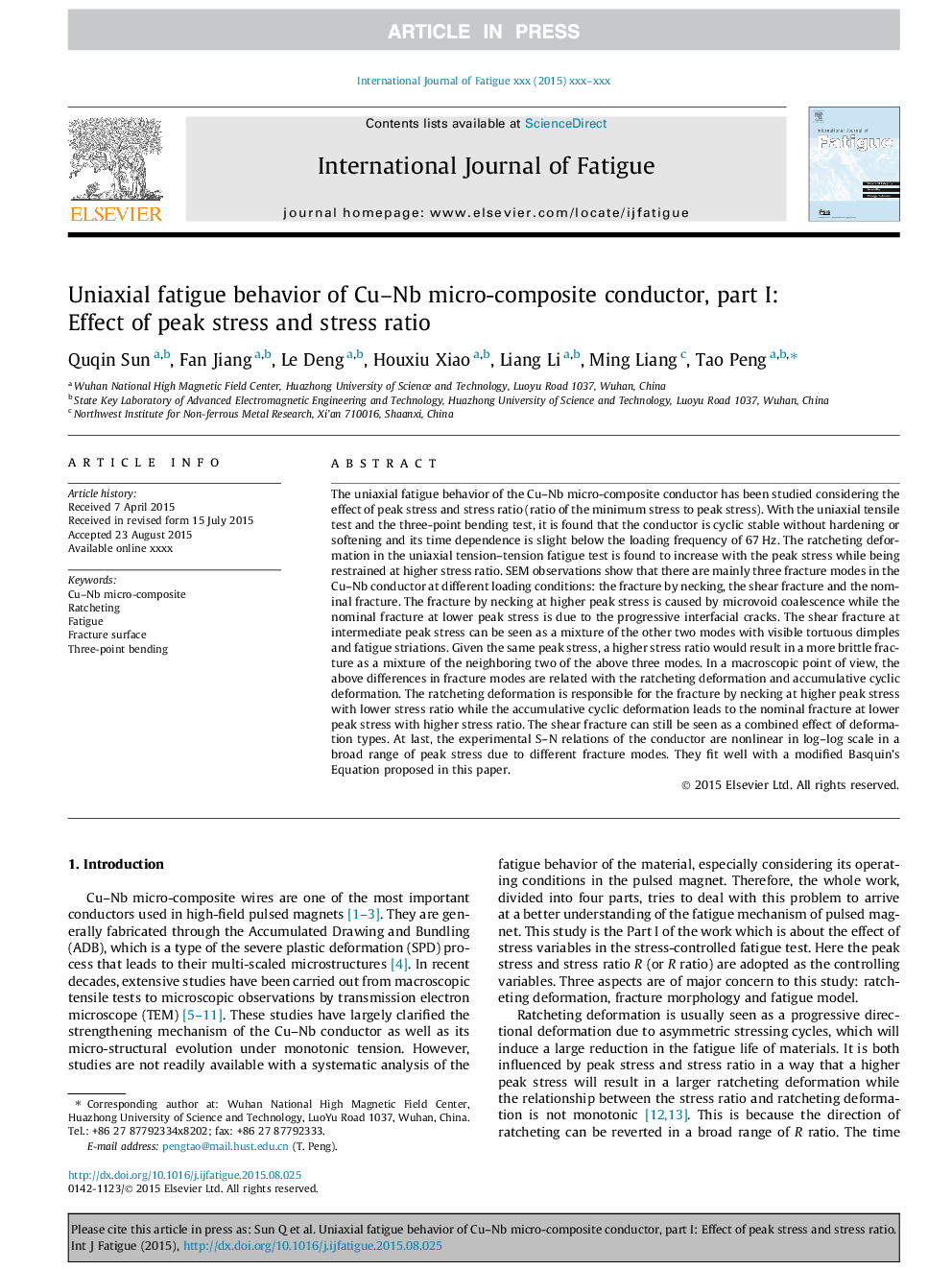| Article ID | Journal | Published Year | Pages | File Type |
|---|---|---|---|---|
| 7171761 | International Journal of Fatigue | 2016 | 11 Pages |
Abstract
The uniaxial fatigue behavior of the Cu-Nb micro-composite conductor has been studied considering the effect of peak stress and stress ratio (ratio of the minimum stress to peak stress). With the uniaxial tensile test and the three-point bending test, it is found that the conductor is cyclic stable without hardening or softening and its time dependence is slight below the loading frequency of 67Â Hz. The ratcheting deformation in the uniaxial tension-tension fatigue test is found to increase with the peak stress while being restrained at higher stress ratio. SEM observations show that there are mainly three fracture modes in the Cu-Nb conductor at different loading conditions: the fracture by necking, the shear fracture and the nominal fracture. The fracture by necking at higher peak stress is caused by microvoid coalescence while the nominal fracture at lower peak stress is due to the progressive interfacial cracks. The shear fracture at intermediate peak stress can be seen as a mixture of the other two modes with visible tortuous dimples and fatigue striations. Given the same peak stress, a higher stress ratio would result in a more brittle fracture as a mixture of the neighboring two of the above three modes. In a macroscopic point of view, the above differences in fracture modes are related with the ratcheting deformation and accumulative cyclic deformation. The ratcheting deformation is responsible for the fracture by necking at higher peak stress with lower stress ratio while the accumulative cyclic deformation leads to the nominal fracture at lower peak stress with higher stress ratio. The shear fracture can still be seen as a combined effect of deformation types. At last, the experimental S-N relations of the conductor are nonlinear in log-log scale in a broad range of peak stress due to different fracture modes. They fit well with a modified Basquin's Equation proposed in this paper.
Related Topics
Physical Sciences and Engineering
Engineering
Mechanical Engineering
Authors
Quqin Sun, Fan Jiang, Le Deng, Houxiu Xiao, Liang Li, Ming Liang, Tao Peng,
